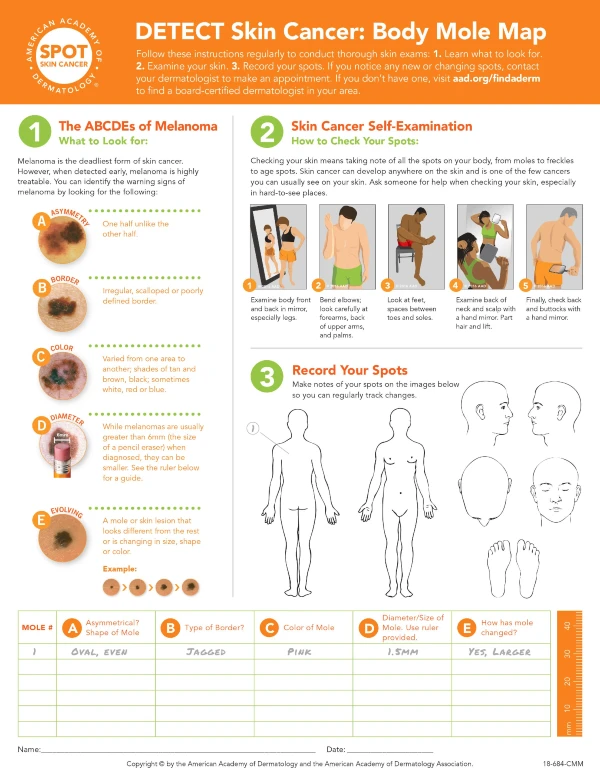May is Skin Cancer Awareness Month and throughout the month of May, people are encouraged to do their part to raise awareness about skin cancer. Skin cancer is the most common form of cancer in the United States and the third most common in Canada. Fortunately, it is also one of the most preventable forms of cancer and highly treatable when detected early.
Most cases of melanoma, the deadliest kind of skin cancer, are caused by exposure to ultraviolet (UV) rays. Basal and squamous cell skin cancers are more common than melanoma, but Melanoma is the most likely form of skin cancer to grow and spread to other parts of the body, making it more difficult to treat.
Risk Factors for Skin Cancer Include:
- Too much exposure to ultraviolet (UV) radiation from the sun or tanning beds
- Pale skin and natural red, or blond hair
- Family history of skin cancer
- Multiple or unusual moles
- Older age (though young people are not immune to skin cancer)
- Severe sunburns in the past
How To Minimize Your Chances of Developing Skin Cancer
Avoiding too much sun, covering up, and using sunscreen is the key to preventing skin cancer. Our sister store – Phamix.com – stocks a wide range of safe and effective sunscreens. If found and treated early, all forms of skin cancer are almost always curable. You can help reduce your chances of developing skin cancer by:
- Staying out of the sun during peak hours of the day when the sun’s rays are the strongest (10am to 4pm).
- Covering up as much of your body with protective clothing as possible when in the sun
- Apply generous amounts of sunscreen with broad spectrum protection and at least SPF of 30 or higher when outside. Reapply every two hours, or after swimming or sweating.
- Cover your head with a wide-brimmed hat, shading your face, ears, and neck.
- Wear sunglasses that block 100% of UVA and UVB rays to protect the eyes and surrounding skin.
- Avoid other sources of UV light, including tanning beds and sun lamps.
- Have regular skin cancer screenings to detect possible skin cancer in early stages.
The American Academy of Dermatology’s 2017 SPOT Skin Cancer™ campaign — “Check Your Partner. Check Yourself” — is encouraging women to check both their partners and themselves for signs of skin cancer. When detected early, skin cancer — including melanoma, the deadliest form of skin cancer — is highly treatable.
Research has shown that women are nine times more likely than men to notice melanoma on others, which means women could help save their partners’ lives by helping them spot skin cancer.
This is especially important for men over 50 as they have an increased risk of developing melanoma compared to the general population. If you notice any suspicious spots on your skin or your partner’s skin, or anything changing, itching or bleeding, see a dermatologist.








